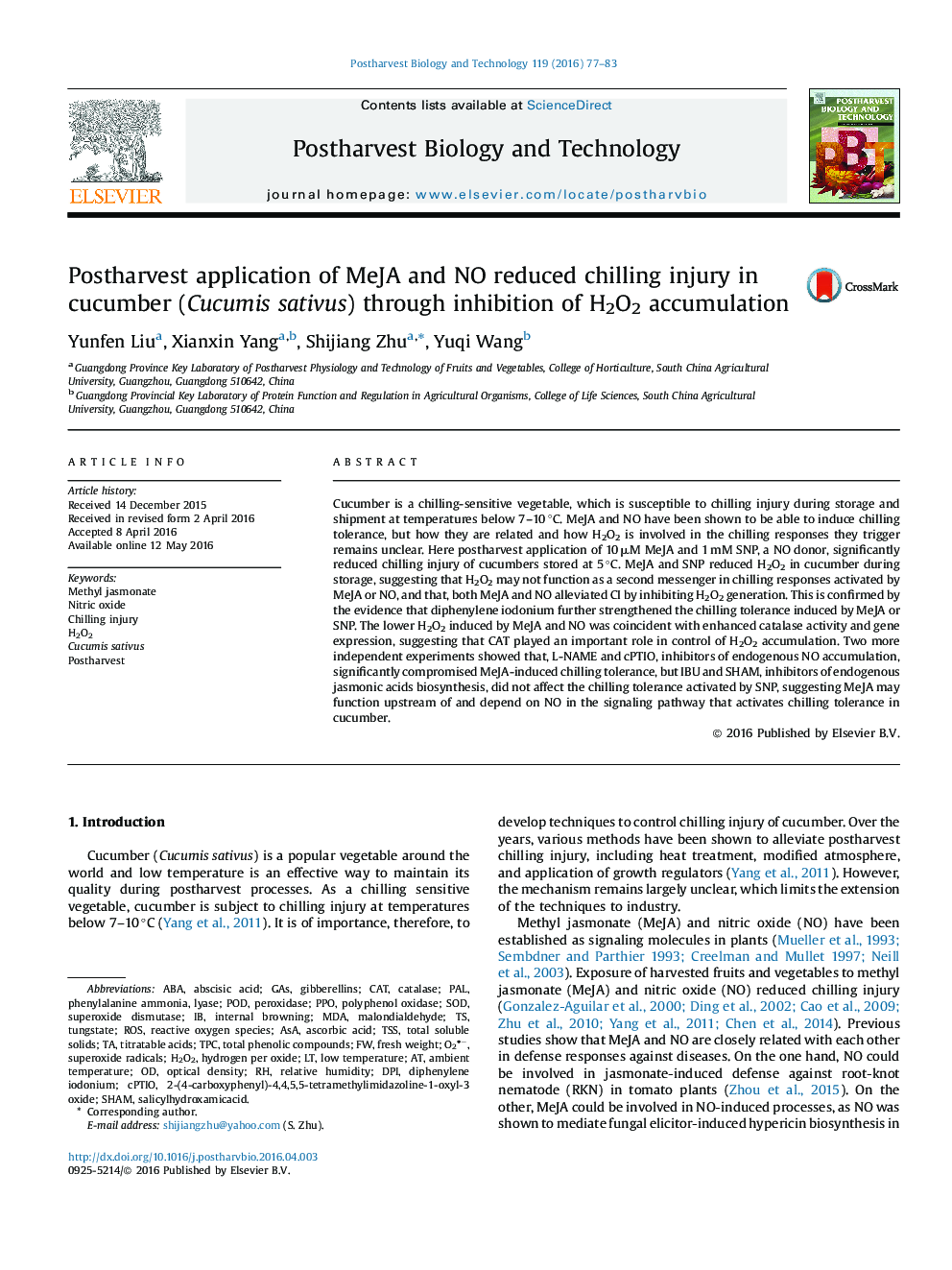| Article ID | Journal | Published Year | Pages | File Type |
|---|---|---|---|---|
| 4517758 | Postharvest Biology and Technology | 2016 | 7 Pages |
•Cucumber is subject to chilling injury at temperatures below 7–10 °C.•MeJA and NO alleviated chilling injury of cucumber stored at 5 °C.•MeJA and NO reduced chilling injury through inhibition of H2O2 accumulation.•MeJA functions upstream of and depends on NO in the signaling pathway.
Cucumber is a chilling-sensitive vegetable, which is susceptible to chilling injury during storage and shipment at temperatures below 7–10 °C. MeJA and NO have been shown to be able to induce chilling tolerance, but how they are related and how H2O2 is involved in the chilling responses they trigger remains unclear. Here postharvest application of 10 μM MeJA and 1 mM SNP, a NO donor, significantly reduced chilling injury of cucumbers stored at 5 °C. MeJA and SNP reduced H2O2 in cucumber during storage, suggesting that H2O2 may not function as a second messenger in chilling responses activated by MeJA or NO, and that, both MeJA and NO alleviated CI by inhibiting H2O2 generation. This is confirmed by the evidence that diphenylene iodonium further strengthened the chilling tolerance induced by MeJA or SNP. The lower H2O2 induced by MeJA and NO was coincident with enhanced catalase activity and gene expression, suggesting that CAT played an important role in control of H2O2 accumulation. Two more independent experiments showed that, L-NAME and cPTIO, inhibitors of endogenous NO accumulation, significantly compromised MeJA-induced chilling tolerance, but IBU and SHAM, inhibitors of endogenous jasmonic acids biosynthesis, did not affect the chilling tolerance activated by SNP, suggesting MeJA may function upstream of and depend on NO in the signaling pathway that activates chilling tolerance in cucumber.
